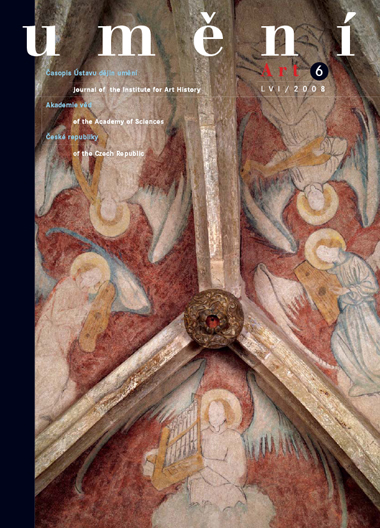Zuzana Všetečková
Gotické nástěnné malby v kryptě sv. Kateřiny v kostele sv. Štěpána v Kouřimi
St Catherine's Crypt in the Church of St Stephen in Kouřim was built in the 1260s on an octagonal plan with a star vault and a central pier. Between 1999 and 2006, full and half figures of twenty-four angel 'musicians' were uncovered in the triangular- and diamond-shaped vault planes. The figures are depicted holding string, wind, and percussion instruments in their hands: portable organs, a harp, a vielle, zithers and lutes, a marine trumpet, a wing-shaped 'Bohemian' psaltery, a trumpet, a shalm, bagpipes, hand drums, bells and a triangle. Such 'musician' angels, twenty-four (twenty eight) in number, were painted in the 1360s in the frescoes on the vault in the stair well of the Large Tower at Karlštejn and the rest of them (six in number) in the Cloister of the Emmaus Monastery in Prague. During the reign of Charles IV there was an entire 'catalogue' of musical instruments available in Bohemia (Björn Tammen), and the later Kouřim paintings confirm this (c. 1407). Three walls of the crypt contain depictions of the Crucifixion and two scenes from the Legend of St Catherine, (one with the saint kneeling in prayer before two wheels, and another fragment from the Beheading of the Saint). The paintings can be ranked as examples of the 'Beautiful Style', typical elements of which are the idealisation of facial features and the depiction of rich folds on the garments. In technique they are reminiscent of the 'wash' drawings less common in monumental paintings, in which the postures of the figures and the rounded and vertical folds of their clothing are painted with broad brushstrokes in shades of light green, red, blue and yellow. The painters based their technique on the narrative illustrations found in typological manuscripts, such as Biblia pauperum, Speculum humanae slavationis, and different sketchbooks. The high quality of the paintings in the Kouřim may be influenced by artists who were working in the Cistercian monasteries nearby Skalice and in Sedlec near Kutná Hora, who Prior, Jan, became Provost of Kouřim in 1407. The donators, depicted kneeling alongside the Crucifixion, are believed to be the brothers Bavor and Jindřich of Všeruby, who also had a crossbar in their coat of arms.
Full-text in the Digital Library of the Czech Academy of Sciences:
https://kramerius.lib.cas.cz/uuid/uuid:c17c99e5-892e-0ef1-e0c0-3f9298e0adca
< back

